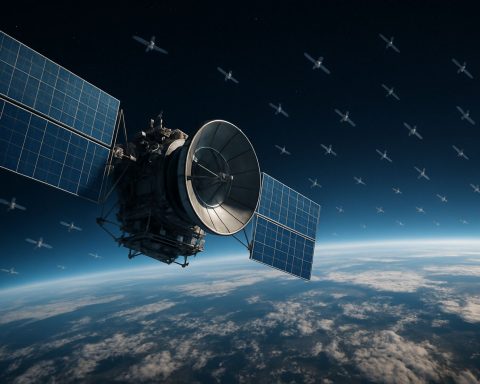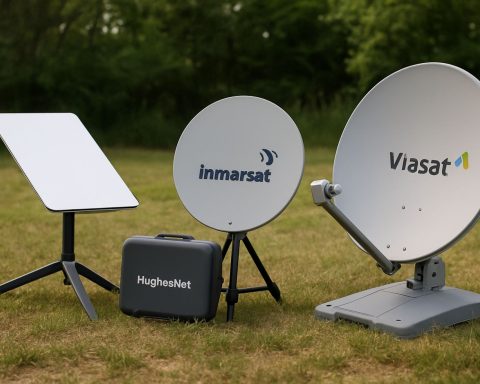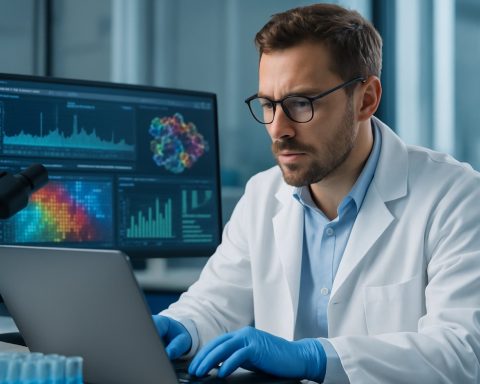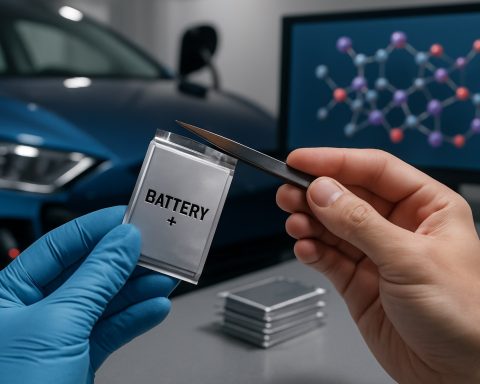- Scientists at the University of Michigan have developed a groundbreaking lithium-ion battery technology.
- New batteries can charge in just ten minutes, even at -10°C, revolutionizing EV performance in cold climates.
- This is achieved through a 20-nanometer layer of single-ion conducting glassy solid electrolyte (LBCO) applied via atomic layer deposition.
- The technology integrates a laser-patterned electrode (HOLE), significantly extending battery lifespan and capacity retention in low temperatures.
- LBCO-HOLE batteries improve charge rate capability by over 400% at a 4C fast charge and 500% at 6C.
- The innovation is compatible with existing EV production lines, facilitating smooth industry adoption.
- This advancement is crucial for enhancing reliability, efficiency, and adaptability in electric vehicles, particularly in harsh climates.
In a significant leap towards transforming the electric vehicle industry, scientists at the University of Michigan have unveiled a breakthrough in lithium-ion battery technology. Picture this: an electric car charging in just ten minutes, even when the temperature dips to a bone-chilling -10°C. This remarkable advancement, which promises to redefine the constraints of electric vehicles in harsh climates, is now spearheaded for commercialization by Arbor Battery Innovations.
Gone are the days when EV owners dreaded cold weather’s impact on charging speeds. Traditional EV batteries rely on liquid electrolytes to shuttle lithium ions between electrodes, a process that slows considerably as temperatures plummet. Historically, attempts to mitigate this involved thicker electrodes, yet they inevitably compromised charging speed.
Visualize the issue as slicing butter—easier when warm, painfully slow when cold. This same principle stymies current battery performance. As the temperature drops, lithium ions slow down, causing metallic lithium to build up on the anode like an unwelcome traffic jam, severely affecting capacity and degrading the battery.
Enter the game-changer: a 20-nanometer layer of glassy material, known scientifically as a single-ion conducting glassy solid electrolyte (Li₃BO₃-Li₂CO₃ or LBCO), meticulously applied to battery cells using atomic layer deposition. This isn’t merely an upgrade; it’s a revolution. By combining LBCO with a highly organized laser-patterned electrode known as the HOLE (Highly Ordered Laser-Etched), the results are astounding. Batteries bolster over 90% of their capacity after numerous fast-charging cycles at sub-zero temperatures—a stark contrast to uncoated batteries, which dwindle below 50% capacity rapidly.
This technological tour de force encapsulates more than just speed; it’s about resilience. The advanced LBCO-HOLE batteries have demonstrated an improvement in rate capability by over 400% at a 4C fast charge and 500% at 6C, a substantial upgrade for the industry.
Why does this matter? As electric vehicles become ubiquitous, solving the puzzle of efficient cold-weather performance is pivotal. This technology not only enhances vehicle range and charge speed but integrates seamlessly into existing production lines without requiring fundamental changes.
The new battery offers an exhilarating promise of reliability, efficiency, and adaptability, transcending geographic and climatic boundaries. Our journey into a sustainable future accelerates with every leap in technology, bringing the vision of swift, worry-free electric travel tantalizingly close.
This innovation, detailed in the journal Joule, embodies a potent reminder: in the relentless pursuit of progress, the obstacles of yesterday can become the stepping stones of tomorrow.
Revolutionary Battery Tech: Electric Vehicles Charge in Just 10 Minutes*
Unveiling the Future of Electric Vehicle Batteries
The electric vehicle (EV) industry is celebrating a groundbreaking innovation from scientists at the University of Michigan: a revolutionary lithium-ion battery technology that promises to significantly reduce charging times, even at extremely low temperatures. This advancement, led by Arbor Battery Innovations, is poised to overcome longstanding barriers that have hindered EV performance in cold climates.
Understanding the Breakthrough
Traditional Battery Challenges:
EV batteries typically struggle with efficiency in colder weather due to the reliance on liquid electrolytes. These electrolytes slow down ion transport between electrodes as temperatures drop, leading to reduced charging speeds and increased battery degradation.
The Game-Changer – Single-Ion Conducting Glassy Solid Electrolyte:
A pioneering solution has emerged in the form of a 20-nanometer layer of glassy material, scientifically known as single-ion conducting glassy solid electrolyte (Li₃BO₃-Li₂CO₃ or LBCO). This layer, combined with a Highly Ordered Laser-Etched (HOLE) electrode, allows for rapid charging even in sub-zero conditions, maintaining over 90% capacity after numerous cycles.
Benefits of the New Technology
1. Drastically Reduced Charging Times: Imagine charging your EV in just 10 minutes, not only in warm weather but also when it’s -10°C. This feature alone could transform consumer perceptions and increase the adoption rate of EVs in colder regions.
2. Enhanced Battery Lifespan and Efficiency: The LBCO-HOLE combination results in a 400% improvement in rate capability at a 4C fast charge and 500% at 6C, significantly extending the lifespan and efficiency of the battery.
3. Seamless Integration: The new batteries can be incorporated into existing EV productions without major alterations to manufacturing processes, making it easier for automakers to adopt this technology.
Real-World Applications and Insights
Market Implications:
This innovation could propel the EV market forward, enhancing the appeal of electric cars to those living in colder climates and addressing a major barrier to widespread EV adoption. According to International Energy Agency, the global EV market is projected to continue its growth, and solutions like this can accelerate that trajectory.
Environmental Impact:
Improved cold-weather performance can reduce reliance on traditional vehicles, contributing to decreased emissions and supporting global sustainability goals.
Expert Opinions and Industry Trends
Experts highlight the importance of such innovations in meeting the rising demand for reliable and efficient batteries. Analysts predict that by 2030, innovations in battery technology, like the one described here, will have significantly increased the range, reduced costs, and improved the environmental footprint of electric vehicles.
Quick Tips for EV Owners
1. Keep Your Vehicle Software Updated: Ensure your electric vehicle is equipped with the latest software updates to maximize battery performance and efficiency.
2. Store Your EV Indoors in Cold Weather: To maintain optimal battery temperature, park your vehicle in a garage or sheltered area when possible.
3. Plan for Rapid Charging Stations: Utilize fast-charging networks that accommodate these advanced batteries for quick top-ups.
Looking Ahead
The integration of this cutting-edge battery technology into mainstream EV production could reshape the automotive landscape. As the industry evolves, these innovations provide hope for a more sustainable, efficient, and accessible future in transportation. For readers eager to stay informed about continued advancements, consider following industry leaders such as IEEE for the latest research and developments in technology.
By addressing previous limitations and enhancing battery performance under various conditions, this breakthrough heralds a new era for electric vehicles, bringing us closer to a cleaner, more efficient future.










